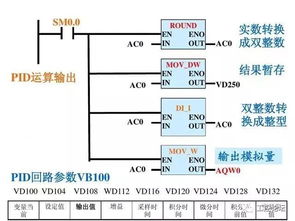遗传编程实例有哪些
遗传编程实例:解决旅行推销员问题
介绍
遗传编程是一种启发式优化算法,受到自然界进化理论的启发。它常被用来解决组合优化问题,其中包括著名的旅行推销员问题(TSP)。TSP是一个经典问题,旨在找到一条路径,让旅行推销员能够访问一组城市,并返回起始城市,同时最小化总行程。
遗传编程的基本原理
遗传编程是通过模拟自然选择的过程来优化解决问题。它基于一组个体(解决方案),每个个体都代表了问题的一个潜在解决方案。这些个体经历一系列进化操作,包括选择、交叉和变异,以生成新的个体,最终找到一个优秀的解决方案。
遗传编程解决TSP的步骤
1.
初始化种群
:随机生成一组初始解(路径),作为种群的初始成员。2.
适应度评估
:计算每个个体(路径)的适应度,即路径长度。这可以通过计算路径上所有城市之间的距离之和来实现。3.
选择
:根据个体的适应度,以一定的概率选择个体作为父代。通常适应度较高的个体被选中的概率更高。4.
交叉
:从选中的父代中随机选择两个个体,并通过交叉操作生成新的个体。交叉操作可以是单点交叉、多点交叉等。5.
变异
:对新生成的个体进行变异操作,以增加种群的多样性。变异操作通常是对个体的某些部分进行随机改变。6.
重复迭代
:重复执行选择、交叉和变异操作,直到满足停止条件(如达到最大迭代次数或适应度达到某个阈值)为止。7.
优胜劣汰
:在每一代中,根据适应度评估新生成的个体,并选择保留适应度较高的个体,淘汰适应度较低的个体。8.
收敛
:当达到停止条件时,选择种群中适应度最高的个体作为最终解决方案,即旅行推销员的最优路径。示例代码(Python)
```python
import random
import numpy as np
计算两个城市之间的欧式距离
def distance(city1, city2):
return np.linalg.norm(np.array(city1) np.array(city2))
计算路径长度
def total_distance(path, cities):
dist = 0
for i in range(len(path) 1):
dist = distance(cities[path[i]], cities[path[i 1]])
dist = distance(cities[path[1]], cities[path[0]]) 返回起始城市
return dist
初始化种群
def initialize_population(num_individuals, num_cities):
population = []
for _ in range(num_individuals):
individual = list(range(num_cities))
random.shuffle(individual)
population.append(individual)
return population
选择
def selection(population, fitness, num_parents):
parents = []
for _ in range(num_parents):
idx = random.randint(0, len(population) 1)
parents.append(population[idx])
return parents
交叉
def crossover(parents):
child = []
parent1, parent2 = parents
start, end = sorted([random.randint(0, len(parent1) 1), random.randint(0, len(parent1) 1)])
child = parent1[start:end]
for gene in parent2:
if gene not in child:
child.append(gene)
return child
变异
def mutation(child):
idx1, idx2 = random.sample(range(len(child)), 2)
child[idx1], child[idx2] = child[idx2], child[idx1]
return child
遗传编程求解TSP
def genetic_algorithm(cities, num_generations, population_size, num_parents):
population = initialize_population(population_size, len(cities))
for _ in range(num_generations):
fitness = [1 / total_distance(individual, cities) for individual in population]
parents = selection(population, fitness, num_parents)
new_population = []
for _ in range(population_size):

child = crossover(random.sample(parents, 2))
if random.random() < mutation_rate:
child = mutation(child)
new_population.append(child)
population = new_population
best_individual = min(population, key=lambda x: total_distance(x, cities))
return best_individual, total_distance(best_individual, cities)
示例用法
cities = [(0, 0), (1, 2), (3, 1), (5, 4), (2, 2)]
num_generations = 1000
population_size = 100
num_parents = 20
mutation_rate = 0.1
best_path, shortest_distance = genetic_algorithm(cities, num_generations, population_size, num_parents)
print("Best path:", best_path)
print("Shortest distance:", shortest_distance)
```
这个示例代码演示了如何使用遗传编程算法解决旅行推销员问题。你可以将城市的坐标存储在列表中,然后将其传递给`genetic_algorithm`函数,该函数将返回找到的最佳路径以及其对应的最短距离。
本文 新鼎系統网 原创,转载保留链接!网址:https://acs-product.com/post/12749.html
免责声明:本网站部分内容由用户自行上传,若侵犯了您的权益,请联系我们处理,谢谢!联系QQ:2760375052 版权所有:新鼎系統网沪ICP备2023024866号-15








